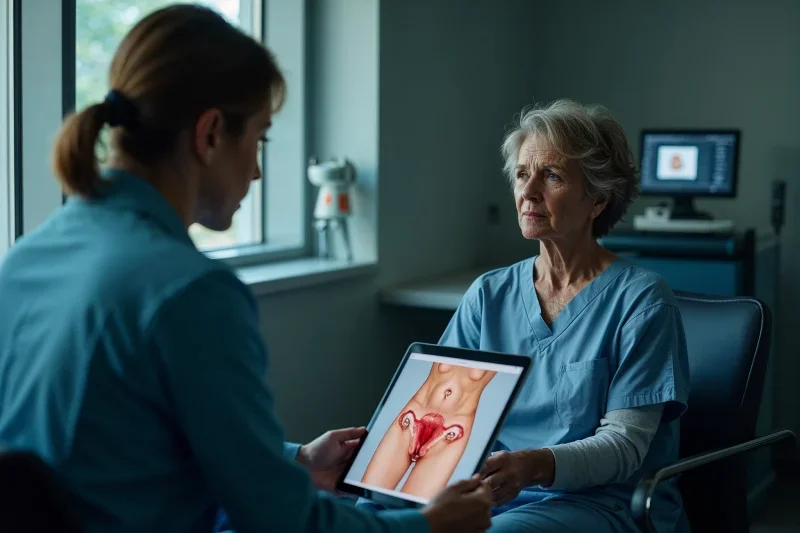What to Expect When You Decide to Untie Your Tubes: A Comprehensive Guide
Categories:
Evaluate financial, emotional, and future planning aspects.
Understand procedure steps, risks, and recovery process.
Consult with fertility specialists for personalized guidance.
Focus on post-untie fertility expectations and conception factors
Introduction
As you stand at the crossroads of possibility, envision a path ahead that leads to the decision to untie your tubes. The journey holds a wealth of information, guidance, and considerations. From the intricate process of tubal ligation reversal to the potential risks and rewards awaiting you, embarking on this venture demands careful thought and preparation. Stay tuned to uncover the insights that will help you navigate this significant choice with clarity and confidence.
Factors to Consider Before Untying
If you’re considering reversing your tubal ligation, understanding the process is crucial. Success rates for tubal ligation reversal vary but are generally between 40-85%, depending on factors such as age, type of tubal ligation performed, and the surgeon's skill. It’s essential to consult with a fertility specialist to determine your chances of success.
Before moving forward with tubal ligation reversal, carefully weigh the success rates and cost considerations. Consulting with a healthcare provider and financial advisor can help you make an informed decision based on your circumstances.Before moving forward with the decision to untie your tubes, it is crucial to consider various factors that can impact the process and outcomes. Here are some key factors to reflect on:
Cost Considerations: Untying your tubes can be a significant financial investment. Ensure you clearly understand the costs involved, including the procedure itself, consultations, tests, and any post-operative care.
Emotional Readiness: Reversing a tubal ligation can bring about a range of emotions. It’s essential to assess your emotional readiness for the process, potential challenges, and the possibility of success or failure.
Support System: Having a strong support system in place can make a difference during the untie process. Consider who will be there to help you physically and emotionally throughout the journey.
Future Family Planning: Think about your future family planning goals and how untying your tubes aligns with them. Reflect on whether this decision fits into your long-term plans and aspirations.
The Untying Procedure Explained
When preparing for the reversal procedure, you’ll first get an overview of how the process works. Recovery and aftercare post-procedure are crucial aspects that you should be informed about to ensure a smooth healing journey. Let’s walk through these points step by step for a better understanding of what to expect.
Reversal Process Overview
To understand the reversal process, let’s delve into the step-by-step procedure involved in reversing a tubal ligation.
Step 1: Anesthesia is administered to ensure you are comfortable during the surgery.
Step 2: The surgeon makes small incisions in the abdomen to access the fallopian tubes.
Step 3: The blocked or tied portions of the tubes are carefully cut, removed, or reconnected.
Step 4: The incisions are closed, and you are monitored before discharge.
Recovery and Aftercare
After undergoing the untying process for tubal ligation reversal, your recovery and aftercare are crucial to ensure a smooth post-operative experience. Physical healing is the primary focus during this period. You may experience some discomfort, but following your doctor’s instructions for pain management and wound care will aid in a speedy recovery. Giving yourself time to rest and avoid strenuous activities is essential to allow your body to heal properly. Emotional support is also vital during this time. Surround yourself with loved ones who can provide encouragement and understanding as you navigate the physical and emotional aspects of the recovery process. Remember to follow up with your healthcare provider for any concerns or questions.
Recovery and Post-Op Care Tips
Following your tubal ligation reversal surgery, carefully adhere to the recommended post-operative care tips for a smooth recovery. It’s essential to prioritize your well-being during this crucial time. Here are some key tips to help you navigate your recovery effectively:
Follow Your Doctor’s Instructions: Adhere to the specific guidelines your healthcare provider provides regarding medication, wound care, and physical activity.
Monitor Your Symptoms: Keep an eye on any unusual symptoms such as excessive pain, fever, or abnormal discharge, and contact your doctor if you have any concerns.
Eat Nutritious Foods: Focus on a balanced diet of fruits, vegetables, and lean proteins to support your body’s recovery.
Stay Hydrated and Rest: Drink plenty of water to stay hydrated, and get enough rest to aid healing.
Potential Risks and Complications
Ensure you know the potential risks and complications of tubal ligation reversal surgery to make informed decisions about your health journey. While tubal ligation reversal is generally safe, there are inherent risks and potential complications to consider. Complications can include infection, bleeding, damage to surrounding organs, and anesthesia risks. Discussing these risks with your healthcare provider before proceeding with the surgery is essential to understand the potential challenges that may arise during the procedure.
Recovery after tubal ligation reversal surgery can also present its own set of challenges. You may experience pain, discomfort, and swelling at the incision site. Following your doctor’s post-operative care instructions carefully is crucial to promote healing and minimize the risk of complications. Additionally, some individuals may face emotional challenges during the recovery period, as the process of untying your tubes can be a significant decision with potential implications for your fertility. Be sure to seek support from loved ones or a counselor to navigate these emotional aspects of your journey.
Fertility Expectations After a tubal reversal
After untying your tubes, you might wonder about your chances of getting pregnant and how long it might take. Understanding the post-untie pregnancy possibilities and the typical timeframe for conception can help you prepare for the journey ahead. Knowing what to expect in terms of fertility after untying your tubes is essential for making informed decisions about your reproductive health.
Post-Untie Pregnancy Chances
Expectations regarding fertility after this procedure can vary. Here are some key points to keep in mind:
Pregnancy success rates: Post-reversal pregnancy success rates can be high, especially if no other fertility issues are present.
Hormonal changes: Your hormonal balance may fluctuate after untying your tubes, affecting your menstrual cycle and ovulation.
Consulting with a fertility specialist: Seeking advice from a fertility specialist can provide valuable insights into your chances of conception.
Regular monitoring: Regular monitoring of your menstrual cycle and ovulation can help optimize the timing for conception.
These factors can play a significant role in your journey toward post-untie pregnancy.
Timeframe for Conception
If you’re wondering how soon you might conceive after untying your tubes, understanding the timeframe for conception is crucial. When it comes to fertility readiness and planning, timing is key. After tubal ligation reversal, the success of conception varies for each individual. Here’s a general idea of what to expect:
| Conception Success |
Timing |
|---|---|
|
Varies
|
First 3-12 months
|
|
60-80% chance
|
Without 2 years
|
|
Success rates increase
|
After 2 years
|
Conclusion
In conclusion, deciding to untie your tubes is a significant step that requires thoughtful deliberation. Being well-informed about the process, potential risks, and post-operative care is essential. Despite the risks involved, many women successfully regain their fertility following tubal ligation reversal. If you are considering robotic surgery like Essure reversal or robotic hysterectomy, it is crucial to seek guidance from a trusted healthcare provider to assess your unique circumstances and determine if this procedure suits you. If you need assistance or services related to tubal ligation reversal, do not hesitate to contact Dr. Jason Neef for expert support and care.
Ready to Rediscover Fertility? Learn More About Tubal Reversal Today!
Call (817) 568-8731Categories:
Frequently Asked Questions
-
After untying your tubes, you should wait for a fertility timeline to assess your body’s readiness before trying to conceive. This period allows you to address potential conception challenges and ensure a healthy pregnancy.
-
Before undergoing a tubal ligation reversal, consider making lifestyle adjustments. Pre-surgery preparation is key. Focus on a balanced diet and regular exercise routine. Consult with your healthcare provider for personalized recommendations to optimize your chances of success.
-
Untying your tubes can impact your hormonal balance and menstrual cycle. Hormonal regulation may fluctuate post-reversal, leading to changes in menstrual health. Monitoring these shifts with your healthcare provider for guidance and support is essential.
-
Yes, there is a slight risk of your tubes becoming tied again after the reversal procedure, affecting the success rates of future pregnancies. Recurrence risk varies, so discuss this with your doctor to make informed decisions.
-
If you’re considering options to boost fertility beyond tube untying, explore fertility treatments or adoption. Additionally, delve into natural remedies and reproductive health practices to enhance your chances of conceiving. There are various paths to explore.











